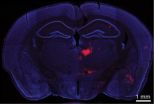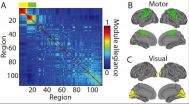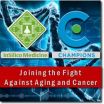(Press-News.org) A July, 2014 Call to Action to Prevent Skin Cancer by acting Surgeon General Dr. Boris Lushniak points out that indoor tanning is "strongly associated with increased skin cancer risk," but stops short of reporting that tanning causes cancer. A University of Colorado Cancer Center opinion published today in the American Journal of Preventive Medicine points out that UV tanning meets the same criteria as smoking as a cause of cancer and argues that announcing the causality could save lives.
"In 1964 when the Surgeon General finally reported that smoking causes lung cancer, awareness and policy followed. Smoking rates declined and lung cancer rates have too. It's time for the Surgeon General to say the same thing about UV tanning," says Robert P. Dellavalle, MD, PhD, MSPH, investigator at the CU Cancer Center, associate professor of dermatology at the University of Colorado School of Medicine, and the study's senior author.
There are nine criteria used to determine a causal relationship in disease, developed in the context of smoking and lung cancer in 1965 by British epidemiologist Sir Austin Bradford Hill. Smoking and UV tanning both meet eight of the nine criteria, as follows:
1. Strength of Association
How much more likely is skin cancer in people who have used tanning beds? Numbers vary, but Dellavalle and colleagues point to analyses of large populations of people showing that skin cancer risk is about 16 percent more likely in people who report ever having used a tanning bed. The strength of the association between smoking and lung cancer is even stronger, with smokers being 35 percent more likely than non-smokers to get lung cancer, but in terms of epidemiology, the 16 percent increased risk of skin cancer in ever-users of UV tanning remains strong.
2. Consistency of Association
Dellavalle and colleagues point out that the link between UV tanning and skin cancer isn't limited to a specific population or nationality. The association is consistent in all studies.
3. Specificity
A cause that leads to many effects is trickier to pin down than a cause that leads to one effect. The one-to-one relationship of UV radiation to skin cancer is long established.
4. Temporality
This may seem obvious, but in order for cause and effect to be true, the cause must happen before the effect. With UV tanning and skin cancer, we see that ever-use of tanning beds precedes increased risk for skin cancer.
5. Biological Gradient
The more you smoke, the more likely you are to contract lung cancer. And the more you use UV tanning beds, the more likely you are to get skin cancer. Specifically, Dellavalle points out that, "Each additional tanning bed session per year confers a 1.8 percent increase in melanoma risk."
6. Plausibility
Is there a plausible way that UV tanning could cause skin cancer? Sure. UV rays from tanning beds penetrate the skins epidermal layer and may induce DNA alternations that promote the formation of cancer.
7. Coherence
The data of lab experiments and population studies is coherent, meaning that data from both sources point toward a similar conclusion.
8. Experiment
Scientists have used UV radiation to cause skin cancer in animal models. But, just as it is unethical to encourage people to smoke in order to see if smoking causes lung cancer, it is unethical to encourage people to tan in order to see if tanning causes skin cancer. Dellavalle points out that lack of ability to test the effect of UV tanning on cancer in a randomized control trial is "a primary advantage for the tanning industry, which claims that there is lack of true science behind cancer-causing claims."
9. Analogy
People with skin types that burn easily have higher rates of skin cancer. It's analogous to tanning as a whole: the more burned you get, the higher your risk.
Dellavalle points out that most cancers are seen as the result of random, genetic mutations that unluckily allow cells to act cancerous. "But skin cancer and lung cancer are preventable types of cancer - reduce smoking and you reduce lung cancer; reduce UV exposure and you reduce skin cancer," he says.
"It's much easier to help people understand that indoor tanning causes cancer than it is to message something more convoluted about 'association'," Dellavalle says. "Tanning beds cause skin cancer. It is time to now more openly announce this causality."
INFORMATION:
The secret communication of gibbons has been interpreted for the first time in a study published in the open access journal BMC Evolutionary Biology. The research reveals the likely meaning of a number of distinct gibbon whispers, or 'hoo' calls, responding to particular events and types of predator, and could provide clues on the evolution of human speech.
While lar gibbons (Hylobates lar) are mainly known for their loud and conspicuous songs, they can also produce a number of soft call types known as 'hoo's. These subtle calls have been alluded to in studies dating ...
Life has adapted to all sorts of extreme environments on Earth, among them, animals like the deer mouse, shimmying and shivering about, and having to squeeze enough energy from the cold, thin air to fuel their bodies and survive.
Now, in a new publication in the journal Molecular Biology and Evolution, Scott, Cheviron et al., have examined the underlying muscle physiology from a group of highland and lowland deer mice. Deer mice were chosen because they exhibit the most extreme altitude range of any North American mammal, occurring below sea levels in Death Valley to ...
Cold Spring Harbor, NY - The prefrontal cortex (PFC) plays an important role in cognitive functions such as attention, memory and decision-making. Faulty wiring between PFC and other brain areas is thought to give rise to a variety of cognitive disorders. Disruptions to one particular brain circuit--between the PFC and another part of the brain called the thalamus--have been associated with schizophrenia, but the mechanistic details are unknown. Now, Cold Spring Harbor Laboratory scientists have discovered an inhibitory connection between these brain areas in mice that ...
The Burgess Shale Formation, in the Canadian Rockies of British Columbia, is one of the most famous fossil locations in the world. A recent Palaeontology study introduces a 508 million year old (middle Cambrian) arthropod--called Yawunik kootenayi--from exceptionally preserved specimens of the new Marble Canyon locality within the Burgess Shale Formation.
Its frontal appendage--the "megacheiran great appendage"--is remarkably adorned with teeth, emphasizing an advanced predatory function. The appendage also had long hair-like flagella at the end that likely served a sensory ...
Why do some people learn a new skill right away, while others only gradually improve? Whatever else may be different about their lives, something must be happening in their brains that captures this variation.
Researchers at the University of Pennsylvania, the University of California, Santa Barbara, and Johns Hopkins University have taken a network science approach to this question. In a new study, they measured the connections between different brain regions as participants learned to play a simple game. The differences in neural activity between the quickest and slowest ...
The results appear in the 2015 2nd issue of the journal of Human Genome Variation. To see a video about the partnership between Champions and Insilico, visit: http://tinyurl.com/InsilicoChampions .
Colorectal cancer (CRC) is the third most commonly diagnosed cancer and the second leading cause of cancer deaths in the United States. More than 50,000 people die of CRC each year due to tumor spreading to other organs and almost half of all newly diagnosed patients are in an advanced stage of cancer (metastatic CRC or mCRC) when they are first diagnosed.
With the development ...
A Northwestern University research team potentially has found a safer way to keep blood vessels healthy during and after surgery.
During open-heart procedures, physicians administer large doses of a blood-thinning drug called heparin to prevent clot formation. When given too much heparin, patients can develop complications from excessive bleeding. A common antidote is the compound protamine sulfate, which binds to heparin to reverse its effects.
"Protamine is a natural compound that has been used in surgeries for many decades," said Guillermo Ameer, professor of biomedical ...
The combination of two well-known drugs will have unprecedented effects on pain management, says new research from Queen's.
Combining morphine, a narcotic pain reliever, and nortriptyline, an antidepressant, has been found to successfully relieve chronic neuropathic pain - or a localized sensation of pain due to abnormal function of the nervous system - in 87 per cent of patients, and significantly better than with either drug alone.
"Chronic pain is an increasingly common problem and can exert disastrous personal, societal, and socio-economic impacts on patients, their ...
In the largest study of its kind to date, researchers at Stanford University School of Medicine and their colleagues have found that worldwide only a limited number of mutations are responsible for most cases of transmission of drug-resistant HIV.
HIV, the virus that causes AIDS, can mutate in the presence of antiviral drugs, and these mutations can be transmitted from one person to the next.
In the new study of more than 50,000 patients in 111 countries, the researchers found a small group of mutations accounted for a majority of the cases of transmission-related resistance ...
Washington, DC (April 7, 2015) - Greater availability of percutaneous mechanical circulatory support (MCS) devices for treatment of heart failure is helping expand treatment options for a rapidly growing number of acutely and chronically ill cardiac patients who could benefit from the devices. An expert consensus statement released today by the Society for Cardiovascular Angiography and Interventions (SCAI), American College of Cardiology (ACC), Heart Failure Society of America (HFSA) and The Society of Thoracic Surgeons (STS) provides new guidance to help physicians match ...


